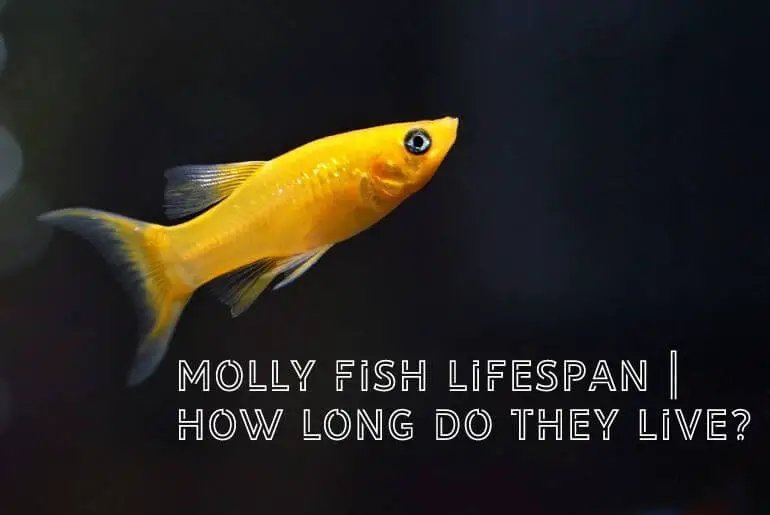
Understanding Molly Lifespan
Mollies usually live anywhere from 3 to 5 years in captivity, but that number can vary based on several factors. You might be wondering what influences this range. Well, it has a lot to do with their environment, diet, and overall care. In nature, mollies face various challenges, like predators and water quality issues, which can shorten their lifespan. However, in a well-maintained aquarium, you can help your fish reach the higher end of that lifespan.
One important aspect to think about is water quality. Just like we need clean air and good food, mollies thrive in fresh, clean water. If their tank is dirty or filled with harmful chemicals, their lifespan can take a hit. Also, they thrive in stable temperatures—ideally between 75°F and 80°F—so keeping their home comfortable is key.
Essential Care Factors for Mollies
Now, let’s break down some essential care factors that can influence how long your mollies survive.
Water Quality
Maintaining good water quality is crucial. Regular water changes—aim for at least 10-20% weekly—help keep harmful toxins in check. You’ll also want to monitor the water’s pH level (ideally between 7.0 and 8.5) and ammonia levels. A simple test kit can help you keep tabs on these factors.
Diet
Next up is diet. Mollies are omnivores, which means they enjoy a mix of plant and protein-based foods. Feeding them high-quality flakes, pellets, and occasional veggies like zucchini can promote better health and, consequently, a longer life. Overfeeding can lead to water quality issues, so keep an eye on portion sizes.
Tank Conditions that Affect Lifespan
The conditions inside your aquarium can significantly impact how long molly fish live.
Size of the Tank
Mollies appreciate space. A tank that’s at least 20 gallons is a great start for a small group. Overcrowding can lead to stress, which can reduce their lifespan. It’s like living in a cramped apartment; not comfortable, right?
Companion Fish
Also, think about tank mates. Mollies generally get along well with other fish, but introducing aggressive species can stress them out. Always research potential companions to ensure a friendly environment. A harmonious tank can lead to happier, longer-living fish.
Common Health Issues
Just like any pet, mollies can face health challenges that could affect their lifespan.
Swim Bladder Disorder
One common issue is swim bladder disorder, where a fish has trouble swimming, either floating to the top or sinking to the bottom. This can stem from overfeeding or poor water conditions. If you notice this happening, check your water quality and diet.
Ich (White Spot Disease)
Another concern is Ich, which is a parasite that shows up as white spots on the fish’s body. It’s highly contagious but treatable with medications available at pet stores. Catching it early can save your fish and keep them living their full potential.
Breeding and Lifespan
If you’re thinking about breeding mollies, it’s good to know how this can also influence their lifespan.
Stress of Breeding
Breeding can be stressful for mollies, especially if they perceive threats around them. Pregnant females require a peaceful environment to thrive, and stressful situations can shorten their lifespan. If you’re breeding, separate pregnant females into a breeding box to keep them safe and calm while they give birth.
Impact on Health
Additionally, newborn fry need special care, and overcrowding can lead to health issues for both adults and fry. A well-managed breeding situation can ensure not just the fry’s survival but also the health of the parents.
Understanding the Impact of Genetics
Believe it or not, genetics play a role too! Some mollies are bred for specific traits, like color or size, which can sometimes lead to health complications.
Store-Obtained Fish vs. Breeding
Fish bought from stores may not always have the best genetics, leading to shorter lifespans. If you’re serious about keeping mollies long-term, consider acquiring them from reputable breeders who focus on health and genetics.
Signs of Aging
As mollies age, they might not look or act like the vibrant little guys you first brought home. You might notice changes like slower swimming or faded colors. Being aware of these signs can help you make the right decisions regarding their care as they grow older.
In conclusion, the lifespan of molly fish in captivity typically ranges from 3 to 5 years. By maintaining good water quality, providing a balanced diet, ensuring appropriate tank conditions, and being mindful of potential health issues, you can give your mollies the best possible life. After all, keeping fish is not just about aesthetics; it’s about ensuring they thrive and live long, happy lives. With the right care and attention, your mollies can bring joy to your aquarium for years to come!

